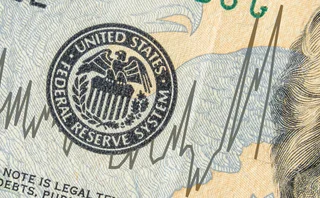
Banks turn to synthetic derivatives to cut initial margin
Options-based instruments can halve initial margin for some non-cleared products, say dealers

At least two dealers have turned to so-called synthetic derivatives to reduce the initial margin (IM) required for their interest rate and foreign exchange portfolios, with estimated margin savings of up to 50% on some positions.
New margin rules require large dealers to post initial margin against new non-cleared derivatives positions. This has created a problem for the trading of instruments such as swaptions, which are non-cleared but hedged with cleared swaps.
Under the industry’s agreed standard initial margin model (Simm), the more directional a portfolio is, the more initial margin needs to be posted, so some banks have looked to create non-cleared synthetic swaps – a long swaptions call and a short put – with the same counterparty to mimic the cleared hedge. This offsets the directionality of the swaptions position and reduces initial margin in the process.
“Swaptions have a big contribution to IM and they are delta-hedged with cleared swaps. So instead, one can use calls minus puts to reduce the IM,” says a credit valuation adjustment trader at a European bank. The trader says a 20–30% reduction will be possible by using synthetic swaps to offset IM.
Once the IM is offset, the original delta, which is the sensitivity of the position’s value to changes in the underlying, needs to be reinstated via another cleared swap. The cleared swap does require IM to be posted to the clearing house but the overall amount is less than at the start of the trade.
“We don’t want to change the overall risk profile,” says a managing director at a second European bank. “So you would take synthetic swaps created through swaptions. And then you would reinstate the risk through a swap. The swap is clearable so it will not contribute to Simm IM,” he says.
This technique is also being used for forex products, with at least one European bank using synthetic forex forwards to offset initial margin on non-cleared forex options, forex swaps and non-deliverable forex forwards (NDFs) that haven’t been backloaded to clearing. Similar to swaptions, banks use a combination of forex option puts and calls to offset the forex derivatives position with a counterparty and replace the risk with a deliverable forex forward, which is not subject to the non-cleared margin rules and so doesn’t attract IM.
What we are doing now is trying to develop various Simm IM minimisation tools ahead of the situation when it becomes really large
A managing director at a European bank
“Our overall portfolio across all dealers is probably well hedged. So if we add a synthetic forward to the Simm IM portfolio, we have to reinstate the same amount of risk through different types of trade which are not subject to Simm IM. It would be deliverable forwards in this case,” says the managing director at the second European bank.
The bank has been using synthetic forex derivatives to reduce IM since the first quarter of this year. The managing director says funding costs could potentially be reduced by up to a half, depending on the initial margin profile of the portfolio being optimised.
The margin rules for non-cleared derivatives, which are being implemented in phases that started in September last year, require in-scope entities to post initial and variation margin when trading with each other. More than 20 large dealers with over $3 trillion notional in non-cleared derivatives across the group were caught by the first phase last year, and six more banks are set to start posting IM from September 1.
The managing director at the second European bank says strategies to optimise IM are going to become more important as more banks are required to post margin as the rules are phased in.
“IM for non-centrally cleared derivatives is material. It is not extremely large right now… but as more and more counterparties will be covered by [the] margin reform regulation, the amount of IM that we will have to post to our counterparties will grow and at some point it will become really, really material,” he says.
“So what we are doing now is trying to develop various Simm IM minimisation tools ahead of the situation when it becomes really large,” he adds.
The move is the latest attempt by banks to cut IM for non-cleared trades. Risk.net reported in April that around half of the major banks were decomposing index positions into their constituent parts to allow for better offsetting under the Simm. The majority of the interdealer inflation swap and NDF markets also moved to clearing in September to reduce the IM requirements on new trades.
Only users who have a paid subscription or are part of a corporate subscription are able to print or copy content.
To access these options, along with all other subscription benefits, please contact info@risk.net or view our subscription options here: http://subscriptions.risk.net/subscribe
You are currently unable to print this content. Please contact info@risk.net to find out more.
You are currently unable to copy this content. Please contact info@risk.net to find out more.
Copyright Infopro Digital Limited. All rights reserved.
As outlined in our terms and conditions, https://www.infopro-digital.com/terms-and-conditions/subscriptions/ (point 2.4), printing is limited to a single copy.
If you would like to purchase additional rights please email info@risk.net
Copyright Infopro Digital Limited. All rights reserved.
You may share this content using our article tools. As outlined in our terms and conditions, https://www.infopro-digital.com/terms-and-conditions/subscriptions/ (clause 2.4), an Authorised User may only make one copy of the materials for their own personal use. You must also comply with the restrictions in clause 2.5.
If you would like to purchase additional rights please email info@risk.net
More on Markets
FXGO eyes platform upgrades with new fee model
Bloomberg’s brokerage charges will fund upcoming automation and TCA projects
EU bonds favoured over swaps as hedge for European debt
Hedge funds are increasingly using the bonds to hedge Bunds and OATs as swap correlations decline
Canada benchmark shaken by T+1 hedge fund influx
Shortened settlement cycle swept hedge fund trades into Corra, making the rate more volatile
Basis swaps surge amid US repo concerns
Fed funds-versus-SOFR swap volumes nearly quadruple as declining Fed reserves impact funding rates
India delays initial margin go-live date
RBI communicated putting off initial margin rules one day before planned November 8 implementation
Clearing bottlenecks blamed for muted volumes at FMX
Regulatory hurdles and market conditions have also hampered CME rival since its September launch
JPM sees upside in blurring lines between QIS and SMAs
Hedge funds are combining their strategies with bank indexes to create new products
Hedge funds take profit on vol trades with Trump win
FX volatility drops sharply as positions unwind; rates market sees mixed reaction







